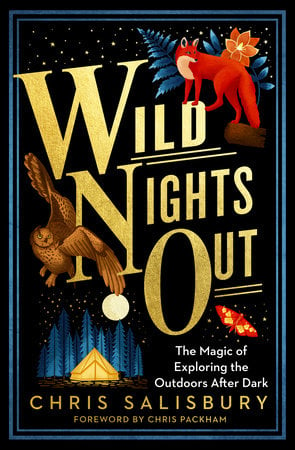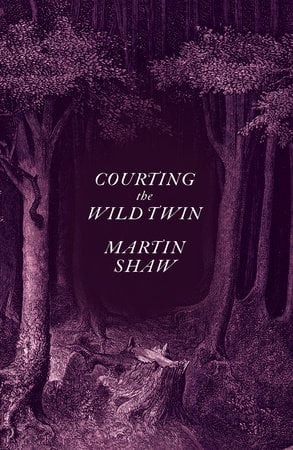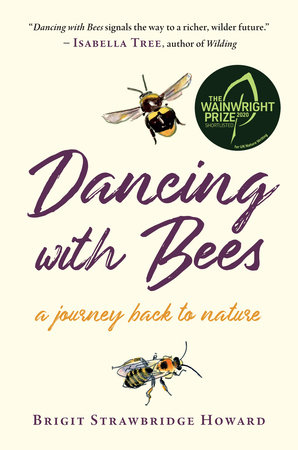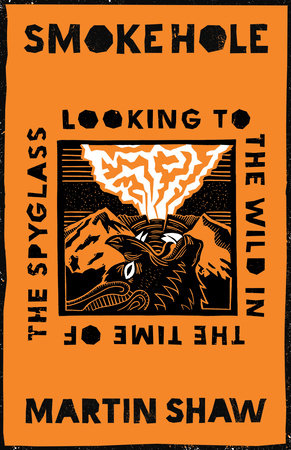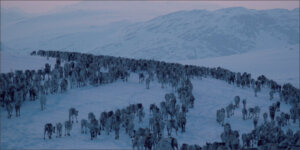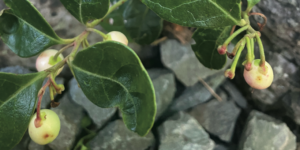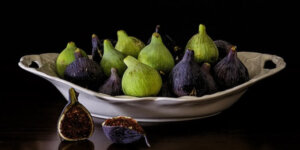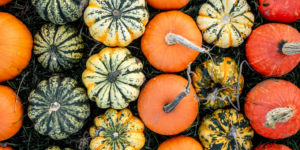Redeeming the Dark
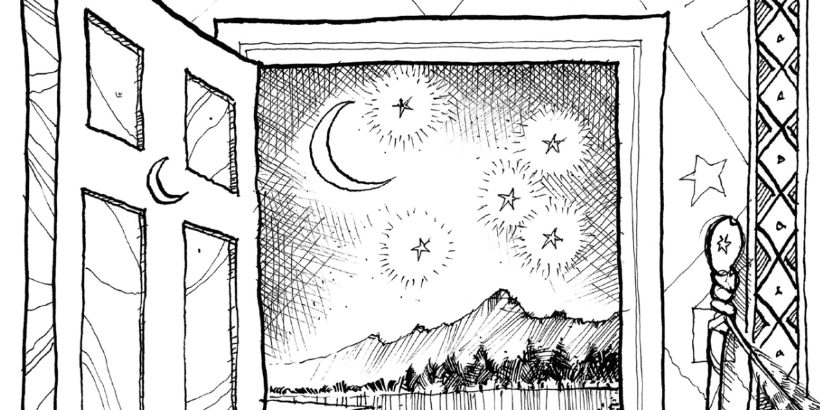
Are you afraid of the dark?
If you said yes, don’t worry, you aren’t alone. But have you ever wondered why the dark gets your blood racing?
In his book Wild Nights Out, author Chris Salisbury explains where that fear comes from and then encourages us to face that fear and go out and explore the night (and the dark.) His book is a wonderful new hands-on guide for those who wish to take kids (of all ages) outdoors for fun, thrilling nighttime nature adventures.
The following excerpt is from Wild Nights Out by Chris Salisbury. It has been adapted for the web.
(All illustrations copyright Stewart Edmondson.)
As my three daughters were growing up, I observed in them the transition from the sweet innocence of their early years when they seemed unafraid of the dark and similarly unafraid of the forest that surrounded our cottage. Something happened to change their perception and it seemed they had quite suddenly learnt to fear any environment where they could not see clearly. I was curious as to why, because I had not consciously taught them fear, or told them of unseen dangers. Indeed, they were oblivious to any tangible threat from beast or bandit.
I continue to ponder whether fear of darkness is biological or cultural.
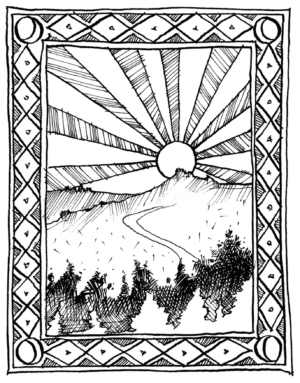
Whether the source of the fear is biological or cultural, my own perception is that it is more pronounced in our contemporary culture that has exiled itself from living close to, and intimately with, the land and its natural cloak of darkness.
There is a cultural symbolism, too, in turning on bright lights. The further we get from living with natural rhythms, the more uncomfortable we seem to be with natural darkness. In our language, we have relegated the concepts of darkness and night-time to the negative, as reflected in expressions like having ‘dark thoughts’ or ‘nightmares’, ‘the dark side’ and ‘casting a dark shadow’.
If our tendency to tame the darkness has its roots in our primitive survival mechanism, something seems to have changed in terms of our cultural perception of the dark. I propose that the soulful quality of the night-time has been lost, as we have strayed far from the path of living a dynamic, reciprocal exchange with nature that offered our predecessors so much texture and meaning within the rhythm of light and dark.
In the old rhythm, dusk was the transition between what went before and the deepening gloom and drop in temperature that necessitated kindling the fire and gathering around it. In that old, simple way, the community would reconstitute itself and process the day. Lamplight and firelight would meet with the dark and resolve into shadows, with long fingers of soft light and black night interplaying in movement that replicated an animate, dynamic, mysterious world. Nothing to be ‘done’ by night. (That said, in the pre-industrial era, and across the world, it was the common habit to have ‘two sleeps’ during the night, interrupted by a brief passage of time in the middle, for all sorts of nocturnal activity. Our assumption of the need for a continuous night of sleep, it appears, is a more modern phenomenon.
In brightening the dark, we extend the day, and our activity can continue unabated. The bright, constant artificial lights of the contemporary night scene leave nothing to the imagination – they imitate daylight rather than soft night light. We simply continue to go about our business as usual, no matter the hour.
As mythologist Martin Shaw writes in Scatterlings, ‘Night always carries its liminal invitation.’ It’s like the stories we love to hear, adults as well as children; unlike theatre or film, which offer the complete picture for our eyes and ears to enjoy, the spoken narrative offers only words for our ears. But our imagination is activated by what our eyes cannot clearly see, conjuring up pictures that form instantly within our own internal cinema. In the same way, by allowing the dark to be a presence in our waking lives, the ‘not seeing’ stimulates our imagination and dreaming. Many traditional tales include the character of a blind person who dispenses wisdom – as if there is a ‘deeper sight’ that is gifted from total darkness. In Norse myth, the god Odin who removed his own eye became ‘one-eyed but twice sighted’.
Subtle changes can take place at night in the ways we interact with one another. As we feel more exposed by the imagined, or real, threat that the night poses, we are brought close together by an implicit understanding of our vulnerability, which is part of our common humanity. In the soft shadows of firelight or lamplight, we subconsciously remember the continuum in which humans have gathered around the hearth, the place of safety and community, for thousands of years. This is especially emphasised on camp, when we circle up around the fire and the night looms large all around us, perhaps magnified by the bright flames and shimmering sparks. As well as the sense of wonder, there is an unspoken communion that binds us together in the deep, and humbling mystery of the dark.
It strikes me as culturally significant that at the winter solstice, we now celebrate with a commercial bonanza. This is the darkest time of the year in the northern hemisphere, when all of the natural signs and rhythms suggest a reflective, introspective season. Yet we keep our ourselves diverted and distracted from the deepening dark with the bright, flashing lights and gaudy decorations of Christmas. It’s not that our pagan ancestors didn’t hold celebrations during the dark times of the year. There were sacramental feasts, for example, that would take place during the first full moon after the winter solstice, a ritual of gratitude for the returning light. I have nothing against celebrations, and certainly not the opportunity for family gatherings and old traditions, but the way it now plays out seems to pile commercial pressure and stress on many families. But perhaps we defer to this diversion so readily because it’s preferable to a long winter enveloped in the soft, slow, penetrative dark.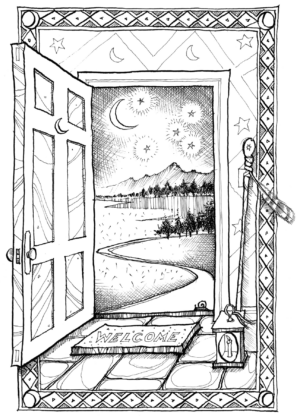
Walking with a friend in the dark is better than walking alone in the light. – Helen Keller
Plants demonstrate so clearly the natural response to the dark and cold onset of autumn and winter, drawing down deep into their rooty essence, into the soil, conserving resources, until the conditions for growth and activity return. Some of our fellow mammals adapt to the dark and cold of winter by retreating into hibernation, riding the seasonal tides to make the most of food supplies and conserving energy. Of course, with the shops full all year round, and the advent of central heating and electric light, this kind of seasonal shift is no longer necessary for human folk.
There is profit in the dark for those who attune to its renewing, restful qualities. Think of it like a good night’s sleep, and how much better we feel for it, ready to face the day. A raft of evidence has surfaced through extensive research showing fundamental health benefits from exposure to the dark, which I discuss later in this chapter. Complementing this, the night offers us sweet sanctuary from to-do lists and deadlines, from clock-watching and schedules, from having to be someone or something. Thus, I encourage you to consciously step over that threshold – let your eyes and circadian rhythms acclimatise, and set off on a moonlit trail that leads somewhere mysterious and enchanting. Nocturnal nature also awaits, in all its miraculous diversity and ‘otherness’, and whatever your location, it can never fail to interest, whether you are out on a solitary ramble or leading a group of excited children on a forest nightwalk.
The Bible proclaims, ‘“Let there be light,” and there was light.’ May I suggest we need to remember to turn the light off sometimes, too…
Recommended Reads
Recent Articles
You know of Dasher, Dancer, Prancer & Vixen. Comet, Cupid, Donner & Blitzen. Rudolph too! But have you heard of the Sámi people who herd reindeer in Norway?
Read MoreWintergreen is the stunning evergreen groundcover that’s a game-changer for your garden! It’s cherished for its aromatic leaves, vibrant fall color & bright berries.
Read MoreThe fig tree is more than just a fruit-bearing wonder. The complex nature of these trees is beyond fascinating. They are the ultimate ecosystem superheroes!
Read MoreThe dirty truth? Soil isn’t just dirt! It’s a complex web of life. Discover the secrets to unlocking its full potential and transform your garden forever.
Read MorePumpkins: Halloween symbol or sweet treat? But have you ever wondered how they became a holiday staple? Discover the rich history behind this fall favorite!
Read More

